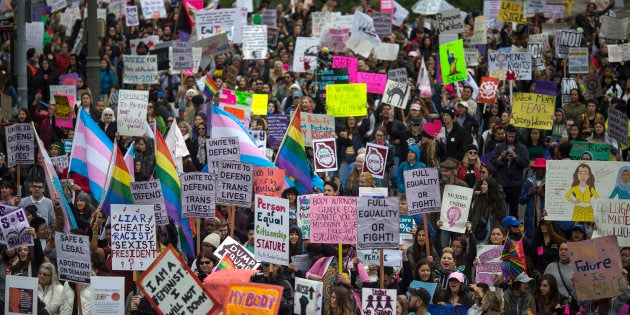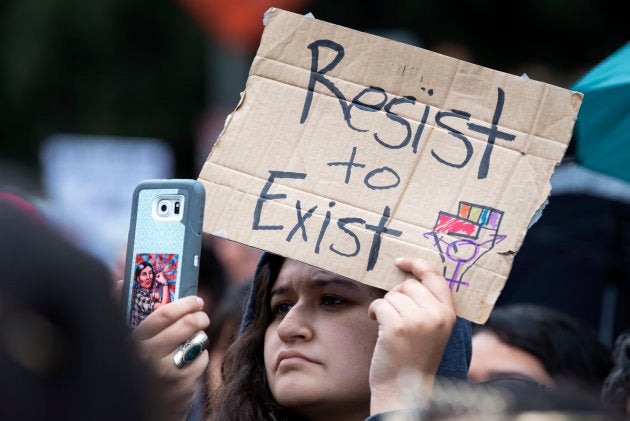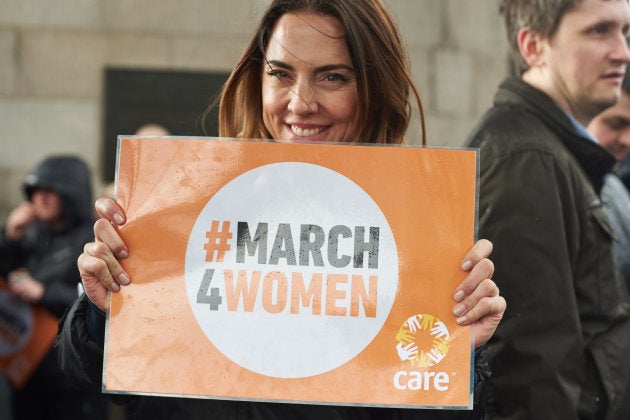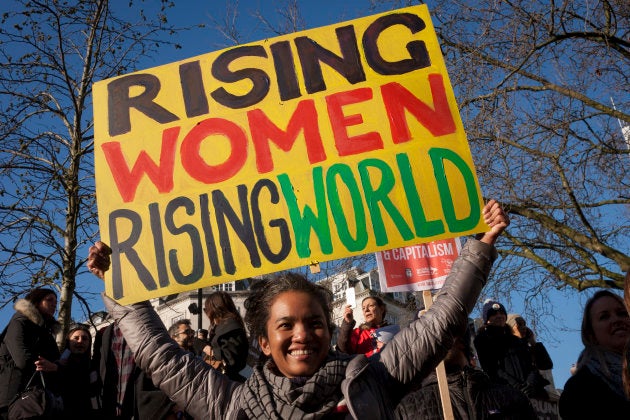
Every year close to International Women's Day, innumerable offers clog up the inboxes of women. Here's a free drink if you are a woman, here's flat 40% off on 8 March, get a group of five girlfriends together and get manis and pedis for half the price—it is endless.
The irony is apparent: International Women's Day is used as an opportunity by businesses to subtly perpetuate stereotypes about women. The messaging also targets the type of woman that advertisements and movies have idealised for years: the petite, the feminine, the beautiful. However, these gimmicks do not go down well with all women.
"Corporations are trying to change International Women's Day to something similar to Rose Day and saying, look how wonderful women are and thank you for suffering for so long in silence. But I see it as a complete inversion. On Women's Day we must protest and reaffirm our resistance. That is the real essence of the day," said Kavita Krishnan, secretary of the All India Progressive Women's Association, to HuffPost India.
Expressing the same sentiments, publisher Urvashi Butalia tells HuffPost India, "I am sure these businesses don't even know why Women's Day is celebrated. For them it is just another day to raise the sales."

So, much as one might enjoy the perks and free booze, International Women's Day stands for something far more meaningful.
Although the beginning of International Women's Day is slightly difficult to trace, with contradictory accounts doing the rounds, The Telegraph writes that it began in 1908, when around 15,000 women took to the streets to demand better pay and working hours, and, most importantly, voting rights.
On Women's Day we must protest and reaffirm our resistance. That is the real essence of the day.Kavita Krishnan
The following year saw American women observing National Women's Day on 28 February. This continued for a couple of years. In 1910, German socialists Luise Zietz and Clara Zetkin proposed the idea of an International Women's Day, which was met with unanimous approval from delegates from 17 countries. The following year, the first International Women's Day was celebrated in Austria, Denmark, Germany and Switzerland on 19 March.
From campaigning for peace before World War I and marching for women's suffrage to fighting for the end of World War I, Women's Day throughout history has been marked by revolutions and uprisings.
In 1913, International Women's Day was celebrated on 8 March and the tradition has stuck since then. In 1975, the UN celebrated the day for the first time.

It has been more than 100 years since Women's Day was first celebrated, but a lot of the concerns that women face remain the same. There still exists a huge wage gap and gender equality is still not realised.
The fastest we can expect to see gender equality is in about 50 years!
According to the World Economic Forum, the world will take a long time to close the gender gap. None of this is conclusive but is based on the rate of progress in each region. The report says that some regions see a faster rate of change, "Among these are South Asia, with a projected closing of the gender gap in 46 years, Western Europe in 61 years, Latin America in 72 years and Sub-Saharan Africa, due to achieve parity in 79 years." The fastest we can expect to see gender equality is in about 50 years!
Jagmati Sangwan, social reformer and former Secretary of All India Democratic Women's Association (AIDWA) tells HuffPost India, "The goal of gender equality that the women who began the International Women's Day hoped to achieve, haven't been realised even now. In fact, in many societies and many areas, the inequality has increased! We must work in accordance with the changing times. And we must do it together."

The World Economic Forum report also mentions, "Projections for other world regions suggest closing their gaps will take longer than 100 years, namely 129 years in the Middle East and North Africa, 146 years in East Asia and the Pacific, and 149 years in Eastern Europe and Central Asia. Given the slow progress over the last decade, the gender gap in North America is expected to close in 158 years."
We must work in accordance with the changing times. And we must do it together.Jagmati Sangwan
Krishnan says, "It is more so now than ever that we need a day like Women's Day, not only to celebrate the struggles of women from all over the world but to reaffirm the needs of the struggle. Labour laws that were won decades ago are completely done away with. I mean see, women fought for eight-hour working days but even now there are women who work for 14-15 hours! We need to fight for equality and dignity. And not only in India but in countries like America as well."
The celebration of International Women's Day every year involves a theme. This year's theme is Be Bold For Change—it urges people to fight inequality at home, in office, and even within oneself, to create a more gender-inclusive world. "You can't really argue with that theme. One has to be bold to bring about change," says Butalia.
In addition, the "A Day Without A Woman" strike in the US is seeking to highlight the economic contributions of women, whether paid or unpaid. Krishnan says, "I am inspired by women who are holding a strike to remind us about the many kinds of labour that women do and ought not to be doing."